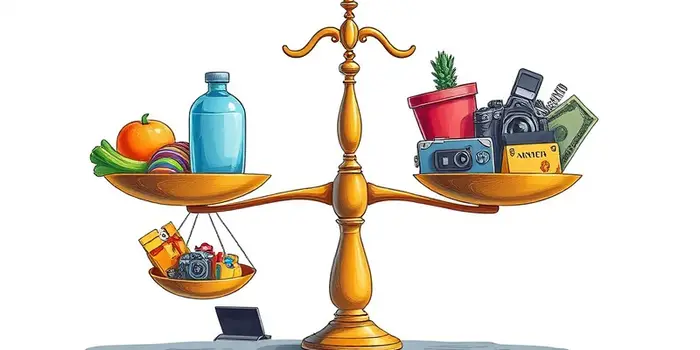
In a world overflowing with options and constant persuasion, distinguishing between what we truly require and what we merely desire has never been more critical. By learning to recognize the difference between our essential for survival and well-being and our fleeting impulses, we can safeguard our finances, our mental health, and our long-term goals.
At the core of responsible living lies a simple framework: needs, wants, and the traps that blur these definitions. Needs are the non-negotiable basics—food, water, shelter, clothing, and healthcare—that we cannot do without. When a need goes unmet, our physical health and safety hang in the balance.
Wants, by contrast, are the items and experiences that add comfort and joy but are not strictly necessary for basic functioning. From the latest smartphone to a weekend getaway, wants are fluid and subject to change with trends, technology, and personal taste.
Maintaining a clear boundary between needs and wants is critical for responsible budgeting and spending. Prioritizing needs ensures we remain stable and healthy, while overspending on wants can trigger a dangerous cascade of debt and stress. The confusion between desires and necessities often leads to impulse purchases, where a momentary surge of excitement yields buyer’s remorse and financial strain.
Financial experts often recommend a simple allocation to help steer clear of trouble: 50% of income for needs, 30% for wants, and 20% for savings and debt repayment. This framework provides a compass when choices feel overwhelming and keeps long-term goals in sight.
When we adhere to these proportions, we build a buffer against unexpected expenses and reduce the likelihood of falling into high-interest debt traps. Each percentage represents a conscious choice to value necessity over fleeting appeal.
Distinguishing between needs and wants often requires deliberate reflection. One effective strategy is the 24-hour rule: delay any non-essential purchase by a full day. If the urge dissipates, it was likely a want rather than a need. This pause creates space for reason to outshine impulse.
Another approach is to reframe your perspective: ask yourself, “Will this purchase prevent basic functioning or well-being if left unfulfilled?” If the answer is no, it’s a want. By adopting this lens, you can avoid impulsive purchasing decisions and focus on long-term satisfaction instead of short-lived thrills.
Instilling financial wisdom in children lays the groundwork for responsible adulthood. Teaching them to pause and question their impulses encourages a healthy relationship with money and prevents entitlement. Children who learn to prioritize essential needs over trendy wants develop resilience and foresight.
Today’s context can transform wants into needs overnight. In areas without public transit, a car becomes indispensable. For remote workers, internet access shifts from a luxury to a requirement. Recognizing this subjective judgment and context prevents rigid rules from causing unnecessary hardship.
Marketing campaigns and social media amplify desires, often obscuring the line between necessity and indulgence. By remaining vigilant and revisiting our own definitions of needs and wants regularly, we stay adaptable without falling prey to consumer-driven traps.
The journey to financial security hinges on understanding and respecting the difference between what we must have and what we would like to have. By applying clear definitions, practical strategies, and mindful habits, we pave the way toward a balanced, financially secure life. When needs are satisfied first, wants enrich our lives without endangering our future, and traps lose their power to derail our progress.
References













